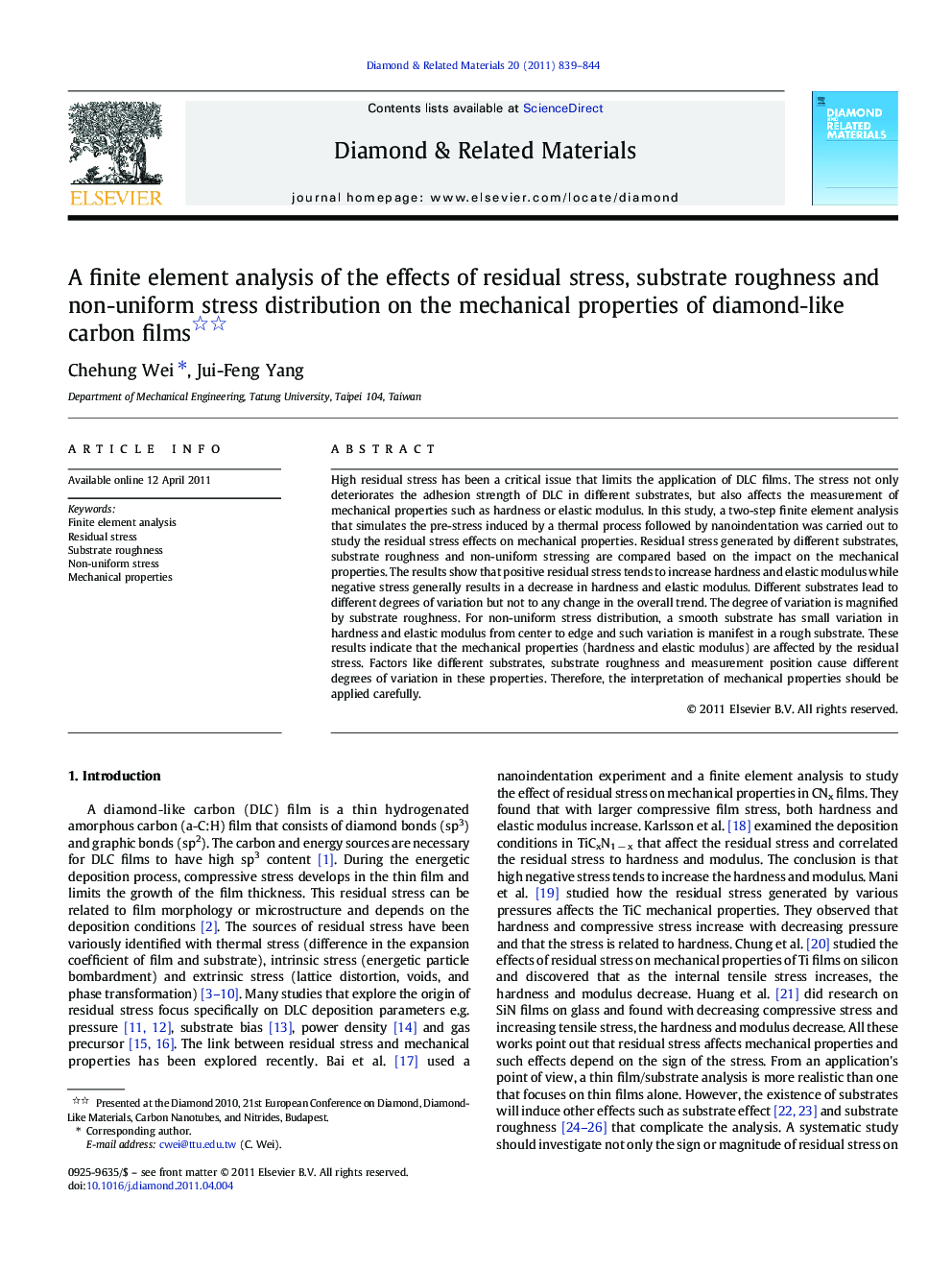| کد مقاله | کد نشریه | سال انتشار | مقاله انگلیسی | نسخه تمام متن |
|---|---|---|---|---|
| 701951 | 1460811 | 2011 | 6 صفحه PDF | دانلود رایگان |

High residual stress has been a critical issue that limits the application of DLC films. The stress not only deteriorates the adhesion strength of DLC in different substrates, but also affects the measurement of mechanical properties such as hardness or elastic modulus. In this study, a two-step finite element analysis that simulates the pre-stress induced by a thermal process followed by nanoindentation was carried out to study the residual stress effects on mechanical properties. Residual stress generated by different substrates, substrate roughness and non-uniform stressing are compared based on the impact on the mechanical properties. The results show that positive residual stress tends to increase hardness and elastic modulus while negative stress generally results in a decrease in hardness and elastic modulus. Different substrates lead to different degrees of variation but not to any change in the overall trend. The degree of variation is magnified by substrate roughness. For non-uniform stress distribution, a smooth substrate has small variation in hardness and elastic modulus from center to edge and such variation is manifest in a rough substrate. These results indicate that the mechanical properties (hardness and elastic modulus) are affected by the residual stress. Factors like different substrates, substrate roughness and measurement position cause different degrees of variation in these properties. Therefore, the interpretation of mechanical properties should be applied carefully.
In this study, a two-step finite element analysis that simulates the pre-stress induced by a thermal process followed by nanoindentation was carried out to study the residual stress effects on mechanical properties. Residual stress generated by different substrates, substrate roughness and non-uniform stressing is compared based on the impact on the mechanical properties. The results show that positive residual stress tends to increase hardness and elastic modulus while negative stress generally results in a decrease in hardness and elastic modulus. Different substrates lead to different degrees of variation but not to any change in the overall trend. The degree of variation is magnified by substrate roughness. For non-uniform stress distribution, a smooth substrate has small variation in hardness and elastic modulus from centre to edge and such variation is manifest in a rough substrate. These results indicate that the mechanical properties (hardness and elastic modulus) are affected by the residual stress. Factors like different substrates, substrate roughness and measurement position cause different degrees of variation in these properties.Figure optionsDownload as PowerPoint slideResearch Highlights
► The sign of the stress has the opposite effects on hardness and elastic modulus.
► Residual stress has a more prominent effect on elastic modulus than hardness.
► Different substrates display different rate of change in mechanical properties.
► The substrate roughness magnifies the residual stress and enhances the variation.
Journal: Diamond and Related Materials - Volume 20, Issues 5–6, May–June 2011, Pages 839–844